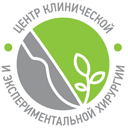Rotocut G1
Laparoscopic excision of nodular adenomyosis and myomectomy with transient occlusion of arteries
Автор: Puchkov K.V.
Professor Puchkov K.V. is performing an operation (2018).
In this video the technique of laparoscopic excision of nodular adenomyosis ( 9 cm), located on the posterior wall of uterus and myomectomy with the transient occlusion of arteries (internal iliac arteries) according to the author’s method of Professor Puchkov K.V. is demonstrated. A 34 year-old patient is operated on for mentioned above problems. At the first stage, immediately after bifurcation of the common iliac artery, pelvic abdomen is opened, and De Bekey vascular forceps are transiently applied onto the internal artery. It gives a possibility to avoid blood loss during the operation. Then nodular adenomyosis is dissected by a monopolar electrode within the boundaries of healthy tissues, without opening uterine cavity. The wound is stitched by V-lock system (MEDTRONIC COVIDIEN), having monofilament resorbable polydioxanone thread, oriented in space with the set angle. It gives a possibility to thread to slide freely in one direction and not to be shifted in the opposite direction. This system gives a possibility to stitch uterine wound fast and layer by layer with the proper hemostasis. Additionally the wound is strengthened by three interrupted Z-shaped stitches, using “Monocril” thread. At the second stage myomectomy is performed with stitching uterine wound, using interrupted suture. Then the forceps are removed from the internal iliac artery; and blood circulation is restored in uterus. Myomatous and adenomyosis nodes are removed from the abdominal cavity by means of electromechanical morcellation Rotocut G1 of Karl Storz Company. Anticommissural gel is applied onto the suture line.
You can read about this technique in detail on the personal cite of Professor Puchkov Konstantin Viktorovich. To go to the link.
Laparoscopic myomectomy. Removal from the abdominal cavity by means of morcelation
Автор: Puchkov K.V.
Laparoscopic myomectomy. Removal from the abdominal cavity by means of morcelation. Professor Puchkov K.V. is performing an operation (2018).
The patient is 40 years old. In her anamnesis it was mentioned that several years ago she was operated on for laparoscopic supracervical hysterectomy (the weight of her uterus was 2 kg); the uterus was removed from the abdominal cavity by means of morcelation. In this video the technique of the laparoscopic myomectomy is demonstrated where myomas (4 nodes, having the size 2-5 cm) have been dissected on the abdomen of the right lateral canal, in the left ileal area and pre-bladder space. Removal of nodes from the abdominal cavity is done with the help of electromechanical morcelation Rotocut G1 (Karl Storz Company) into the plastic container. The conclusion is as follows: it is necessary to observe carefully the abdominal cavity and to do proper lavage of it after morcelation.
You can read about this technique in detail on the personal cite of Professor Puchkov Konstantin Viktorovich. To go to the link.
Laparoscopic hysterectomy without appendages (the uterus weight is 2500g)
Автор: Puchkov K.V.
Laparoscopic hysterectomy without appendages (the uterus weight is 2500g) Professor Puchkov K.V. is performing an operation (2017).
In this video the technique of uterus removal without appendages for the giant myoma (the weight is 2500 g), using the laparoscopic method, by means of a 5 mm LigaSure MEDTRONIC COVIDIEN instrument, is presented. Some myomas are located in the retroperitoneal area and intraligamentarily. As a result of disturbance of nutrition of one of the nodes there is adhesion between the uterine wall and sigmoid colon. Taking into consideration the sizes of uterus, all troacars have been introduced in the right and left subcostal area, for optics- along the midline, 2 cm lower than the xiphoid process. Attention is paid to the consecutive transsection of the round uterine ligaments, fallopian tubes and uterine vessels. A special attention is paid to the closure of vagina and stitching of sacrouterine ligaments for the sake of prevention of stump prolapse development. The removal of uterus from the abdominal cavity is done by means of electromechanical Rotocut G1 morcelation (Karl Storz Company). The operation duration is 90 minutes.
The details of this technique you can read on the personal cite of Professor Puchkov K.V. To go to the link
Laparoscopic supracervical hysterectomy without appendages
Автор: Puchkov K.V.
Laparoscopic supracervical hysterectomy without appendagesProfessor Puchkov K.v. is performing an operation (2017).
A 52 year-old patient has been operated on. The diagnosis is as follows: multiple myomas of uterus, adenomyosis, metrorrhagia. In this video the technique of uterus removal without appendages, is demonstrated, using laparoscopic way, by means of a 5 mm Ligasure MEDTRONIC COVIDIEN instrument. Due to this instrument the operation is performed fast and without blood loss. Attention is paid to the consecutive transsection of the round ligaments, fallopian tubes and urinary vessels. Dissection of uterus from the cervix is performed with the help of a special monopolar loop, produced by Karl Storz Company, that gives a possibility to dissect the tissue fast. A special attention is paid to the technique of closure of the uterine cervix and stitching of sacrouterine ligaments by manual stitching to prevent the prolapse of the uterine cervix. The body of the uterus is removed from the abdominal cavity by means of electromechanical Rotocut G1 morcellation, produced by Karl Storz Company.
You can read about this technique in detail on the personal cite of Professor Puchkov Konstantin Viktorovich. To go to the link.
Laparoscopic myomectomy (intraligamentary node is 6 cm)
Автор: Пучков К.В.
Laparoscopic myomectomy (intraligamentary node is 6 cm)Professor Puchkov K.V. is performing an operation (2017).
In this film the technique of laparoscopic myomectomy is presented. A 30 year-old patient is operated on for intraligamentary myoma of uterus-6 cm- on the right lateral wall and retrocervical endometriosis. At the first stage removal of endometrioid infiltrate of rectum by “shaving” is done, up to the submucous layer, with the further peritonization of operation zone by placing an atraumatic interrupted suture, using “Polysorb” 3-0 thread. Then, using a monopolar electrode, the broad ligament is dissected up to the myomatous node, and using two 10 mm hard forceps, myoma is enucleated out of surrounding tissues; visual control of the right ureter should be taken over. Pelvic fascia is not opened. The wound is stitched by V-lock system (MEDTRONIC COVIDIEN), having monofilament resorbable polydioxanone thread, oriented in space with the set angle. This system gives a possibility to stitch uterine wound fast and layer by layer with the proper hemostasis. Abdomen is stitched, by placing an atraumatic separate suture, using “Monocril” 2-0 thread, in the area of broad and sacrouterine ligaments. Myomatous node is removed from the abdominal cavity by means of electromechanical morcellation Rotocut G1 of Karl Storz Company. Anticommissural gel is applied onto the suture line. Operation duration is 50 minutes.
You can read about this technique in detail on the personal cite of Professor Puchkov Konstantin Viktorovich. To go to the link.
Laparoscopic myomectomy (intraligament node is 12 cm) with the temporary occlusion of the arterial stream
Автор: Puchkov K.V.
Laparoscopic myomectomy (intraligament node is 12 cm) with the temporary occlusion of the arterial stream. Professor Puchkov K.V. is performing an operation (2017)
In this video the technique of laparoscopic myomectomy with the temporary occlusion of the arterial stream (the internal iliac arteries) according to the author’s own method (the patent, dated 2007) is presented. A 36 year-old patient is operated on for intraligament myoma of uterus-12 cm and 4 cm nodes are on the posterior wall. At the first stage, immediately after the bifurcation of the common iliac artery, the pelvic abdomen is opened, and De Bekey vascular forceps are temporarily applied onto the internal artery. It gives a possibility to exclude blood loss during the operation. Then, using a monopolar electrode, the muscle tissue is dissected up to the myomatous node, and using two 10 mm hard forceps the myoma is enucleated from the surrounding tissues, and one should take a visual control of the right ureter. The pelvic fascia is not opened. The wound is stitched by V-lock (MEDTRONIC COVIDIEN) system, made of the monofilament absorbable polydioxanone thread, oriented in space with the set angle. This system gives a possibility to stitch the wound fast and layer by layer with the proper hemostasis. Abdomen is stitched by atraumatic suture, using “Monocril” 2-0 thread, in the area of broad and sacrouterine ligament. Then, the forceps are removed from the internal iliac artery, and bloodstream is restored in the uterus. The myomatous nodes are removed from the abdomen cavity by means of electromechanical Rotocut G1 morcellation (Karl Storz COMPANY). Anticommisural gel is applied onto the wound line.
You can read about this technique in detail on the personal cite of Professor Puchkov Konstantin Viktorovich. To go to the link.
Laparoscopic myomectomy (myoma in the ligament of ovary-5 cm)
Автор: Пучков К.В.
Laparoscopic myomectomy (myoma in the ligament of ovary-5 cm) Professor Puchkov K.V. is performing an operation (2017).
In this film the technique of laparoscopic myomectomy, using a 5 mm electrode, is demonstrated. Dissection of tissues of myoma is performed carefully, with preserving the ligament and ovary. Myomatous node is removed from the abdominal cavity by means of electromechanical morcellation Rotocut G1 of Karl Storz Company. Anticommissural gel is applied on the suture area.
You can read about this technique in detail on the personal cite of Professor Puchkov Konstantin Viktorovich. To go to the link.





 Video of operations
Video of operations

